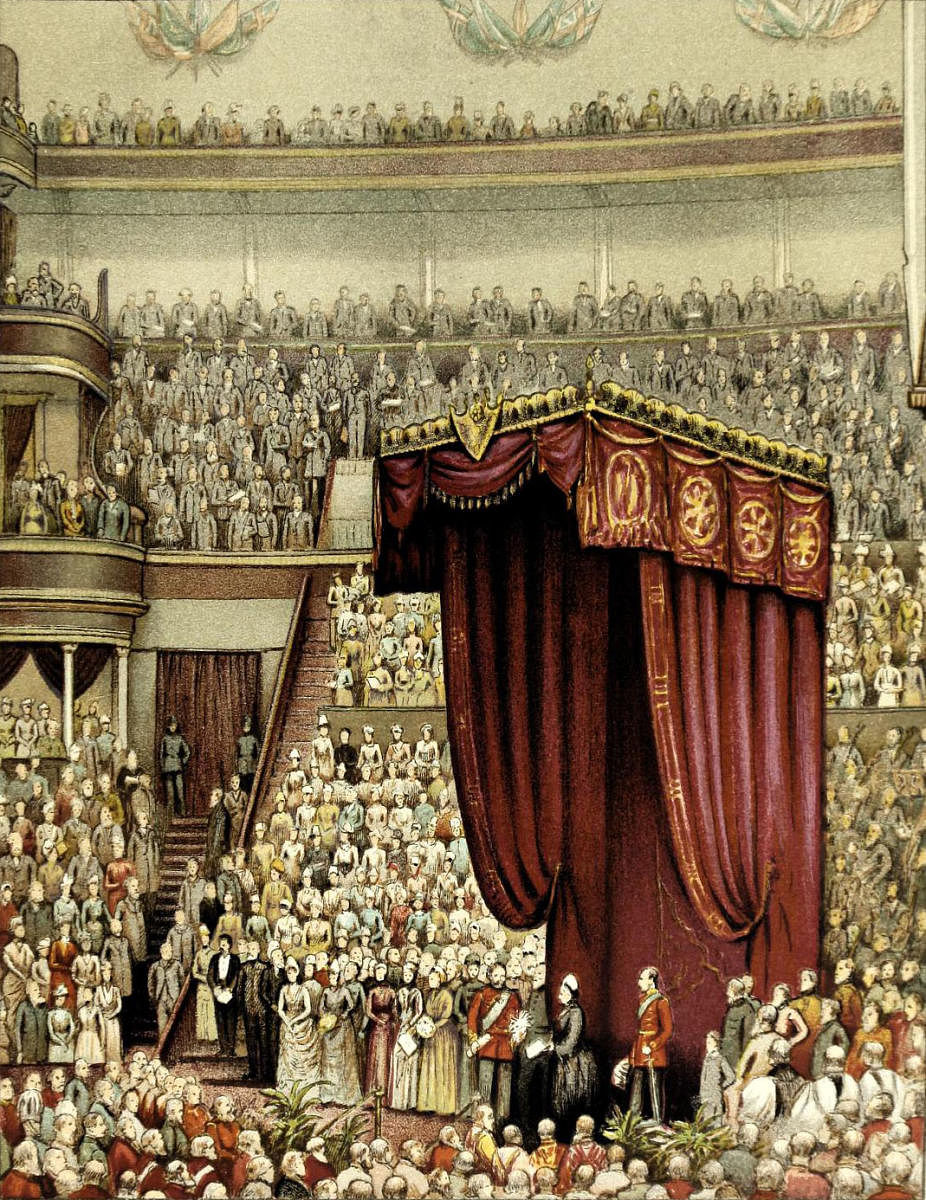
During the late 19th and early 20th centuries, spectacular exhibitions organised in western European nations emerged as a tour de force, attracting crowds to view a range of objects, from the throne of a maharaja to diamonds from southern Africa. The only thing connecting the dizzying array of cultures were the forces that brought these objects to the exhibition location: colonial governments and their foot soldiers.
The Great Exhibition of 1851 was arguably one of the earliest examples of such a splendid display of colonial power in Britain, attracting attention from the public and intellectual community alike. Organised by Henry Cole under the aegis of Prince Albert, the exhibition was a way for the empire to display its industrial prowess on a global scale.
The exhibitions were also crucial in introducing new designs and methods for British industries to emulate, in line with the increasing popularity of trade textiles from India, such as recreating the buta on the Kashmiri shawls as the paisley. Colonial exhibitions became central to the British consumer’s exposure to rich techniques from the colonies, thus affecting trade design and the eventual emergence of movements such as the Arts and Crafts Movement in the 19th century.
Taking forward the success of the 1851 exhibition, the Colonial and Indian Exhibition of 1886 demonstrated the spoils of the empire through the introduction of live artisan exhibits.
A simulated environment of India was created for visitors to walk through, which included over 34 artisans — weavers, miniature painters, engravers, dyers, goldsmiths, sculptors and potters. The artisan exhibits displayed a romanticised view of handmade crafts in direct opposition to the machine-made goods in the European markets. These artisans were at once glorified as “genuine” creators of objects and simultaneously cast as objects themselves by the voyeuristic colonial gaze.
According to scholar Frank Banfield, one artisan recollected that the visitors did not look at their work, but rather at their movements, as if the artisans were “animals” to them. The Indian labouring body was seen as a prime visual of the authenticity of South Asian crafts, set up as the “other” of the machine, more animal than human, more organic than a machine.
Most artisans featured in this exhibition were prisoners from the Agra Central Jail; they had been trained in different arts and textile traditions as part of their rehabilitation program. The value of these handicrafts, marketed to the British public as combating industrial mediocrity, was premised on the labour of prison inmates, who were closely supervised by their jail superintendent, and in many instances, even exploited. The Colonial and Indian exhibition reflects the hollowness of relying on an abstract, ancient cultural history that depended on colonial and capitalist exploitation.
While, on the one hand, the merits of witnessing artistic work done in person was meant to invigorate the design aesthetic of the nation, it was the same mechanised industry that went on to gut the existing indigenous artistic practices of India, the repercussions of which can be felt to this day.
Discover Indian Art is a fortnightly column that delves into fascinating stories on art from across the sub-continent, curated by the editors of the MAP Academy. Find them on Instagram as @map_academy